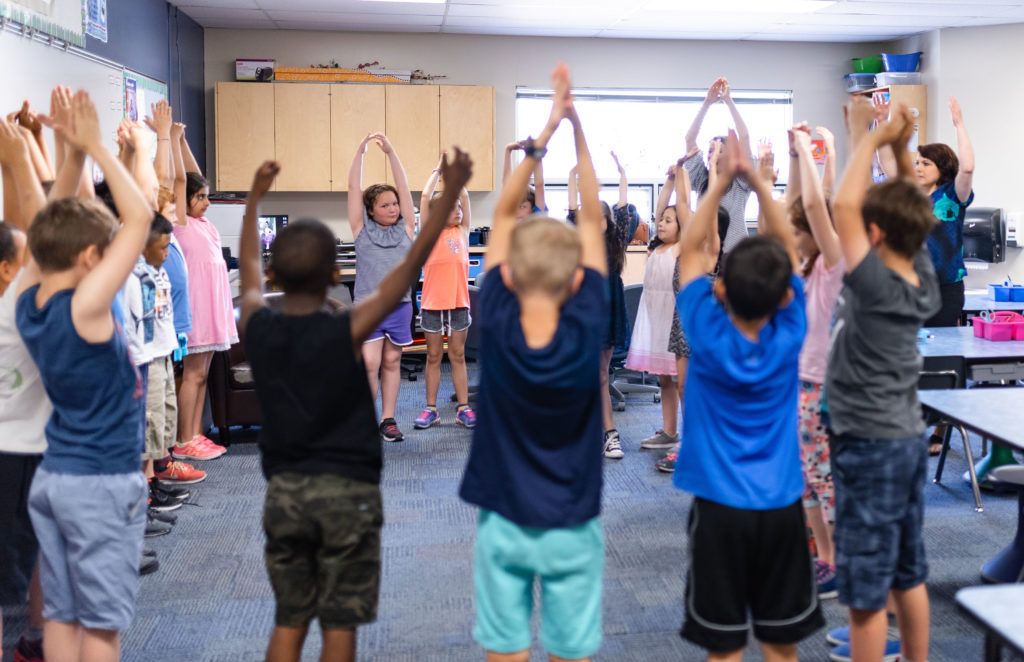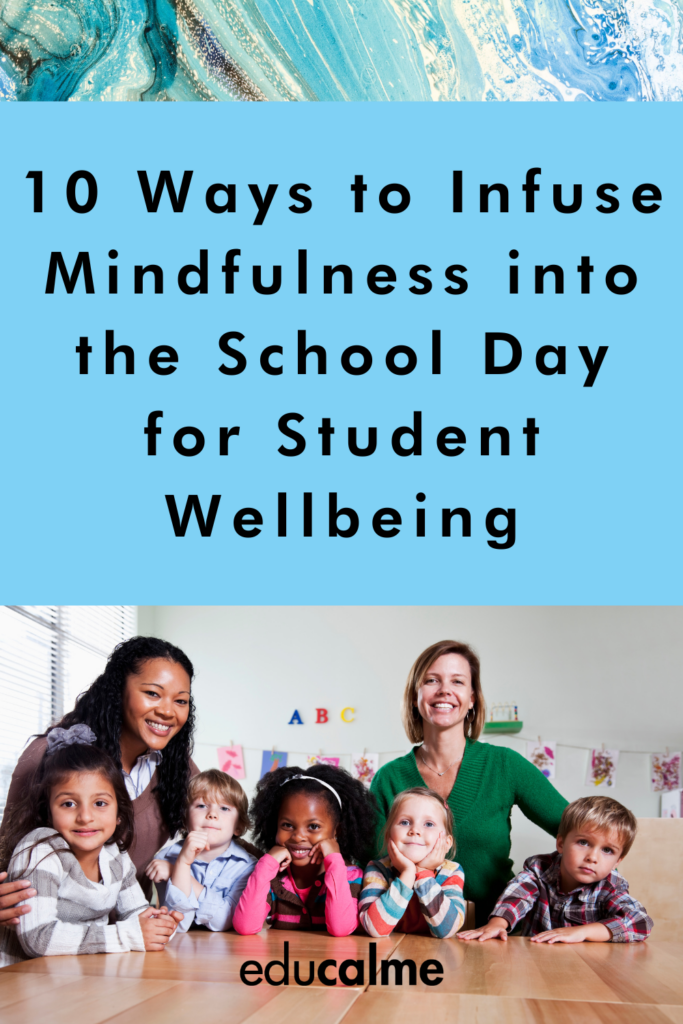As a teacher, you know how important it is to create a positive learning environment that supports the social and emotional wellbeing of your students. One way to achieve this is by infusing mindfulness into the school day. Mindfulness practices in the classroom have been shown to improve student wellbeing, self-regulation, and academic achievement. In this article, we’ll explore 10 ways to cultivate mindfulness in the classroom, promote emotional self-regulation, and support your students’ social and emotional learning (SEL).
One way to infuse mindfulness into the school day is by attaching taking a mindful breath to a cue. For example, every time students get to their spots after a transition, take one big collective breath together before giving the next instruction. This simple practice can help to calm the mind, reduce stress and anxiety, and bring everyone’s focus to the present moment.
Another way to practice mindfulness in the classroom is by eating a snack mindfully. Ask students to eat their snack slowly and use all five senses to savour their food. Encourage them to notice details that they’ve never noticed before, such as the texture, taste, and smell of the food. This practice can help to develop a greater sense of gratitude and appreciation for the simple pleasures in life.
As you walk in line with your students, notice the soles of your feet stepping on the ground. Pay attention to how your feet feel when you walk, how it sounds when you walk, and how your body feels when you’re walking. Encourage your students to do the same. Walking mindfully can help to ground us in the present moment, calm the mind, and improve our focus.
Between tasks and in transition moments when you and your students need a little movement break, stand up, reach and stretch your arms up as you inhale deeply. Then, lower your arms back to your sides as you exhale. Repeat 5 times. This practice can help to energize the body, release tension, and promote relaxation.

Colouring mindfully is a great activity for early finishers. Print the My Calm Place Activity from the Introduction to Mindfulness Unit in your Educalme Free Trial and get students to represent their calm place. This practice can help to improve focus, reduce stress and anxiety, and develop creativity.
Pause and notice how you’re feeling. Then, take an action that supports your wellbeing. Check in with your students by asking them to show you how they’re feeling with their fingers from 0 (tired, low energy) to 5 (lots of energy, hard to sit still). Then, if applicable, choose a mindful activity that will help them be ready to learn like listening to a 2-minute Educalme audio. This practice can help to promote emotional self-regulation, develop self-awareness, and support students in identifying their needs.
Play a tone bar, a triangle or any instrument that rings for several seconds. Close your eyes and listen silently until you can no longer hear the sound. Ask students to raise their hand once they can no longer hear the tone. This practice can help to improve focus, develop listening skills, and promote relaxation.
Our sense of smell is closely tied to our emotions and can have a powerful impact on our state of mind. Take a moment to smell a pleasant scent, such as essential oils, food, or a flower, and appreciate how the scent makes you feel. This simple activity can be a great way to ground yourself and shift your mood. Encourage your students to try it out too, and discuss as a group how different scents make them feel.
Deep breathing is a powerful tool for regulating our emotions and calming our nervous system. To practice calm breathing, place one hand on your heart and the other on your belly. Close your eyes and take five deep, slow breaths, focusing on the feeling of your heart beating and your lungs filling and emptying. This can be a great activity to start or end the school day with, or to use during transitions to help students refocus.
Affirmations are positive, present-tense statements that can help you to feel good and set a positive tone for the day. Start each class by repeating an affirmation together as a group. For example, “I am calm, focused, and ready to learn.” This simple practice can help to create a positive learning environment and promote student wellbeing.
Teaching mindfulness in the classroom can be a powerful way to support student wellbeing and create a positive learning environment. By incorporating simple mindfulness practices into the school day, we can help students to develop social-emotional skills, regulate their emotions, and improve their academic performance. Remember to approach mindfulness with an open mind and be willing to experiment with different practices to find what works best for you and your students.
If you’re interested in learning more about mindfulness in the classroom and social-emotional learning, be sure to check out the Educalme Free Trial. This evidence-based, bilingual (French and English) program offers a range of resources and activities to help teachers cultivate mindfulness and support student wellbeing. From mood check-ins to calming breathing exercises, the Educalme program provides a wealth of teaching resources to help you create a more mindful and positive classroom environment.
